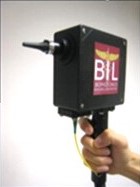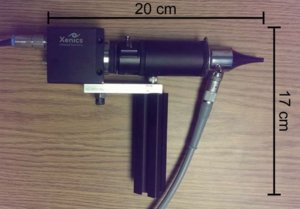Based on my previous thread, I would like to use this thread to post about the current and future developments of middle and inner ear imaging technologies.
Why do we need inner ear imaging technology?
"As otology enters the field of gene therapy and human studies commence, the question arises whether audiograms - the current gold standard for the evaluation of hearing function - can consistently predict cellular damage within the human inner ear and thus should be used to define inclusion criteria for trials. Current assumptions rely on the analysis of small groups of human temporal bones post mortem or from psychophysical identification of cochlear "dead regions" in vivo, but a comprehensive study assessing the correlation between audiometric thresholds and cellular damage within the cochlea is lacking.
...
Audiometric thresholds do not predict specific cellular damage in the human inner ear. Our study highlights the need for better non- or minimally-invasive tools, such as cochlear endoscopy, to establish cellular-level diagnosis and thereby guide therapy and monitor response to treatment."
Source: Human audiometric thresholds do not predict specific cellular damage in the inner ear
Why do we need middle ear imaging technology?
"Otitis media (OM), a middle-ear infection, is the most common childhood illness treated by pediatricians. If inadequately treated, OM can result in long-term chronic problems persisting into adulthood. Children with chronic OM or recurrent OM often have conductive hearing loss and communication difficulties and require surgical treatment.
...
Recent clinical studies have shown evidence of a direct correspondence between chronic OM and the presence of a bacterial biofilm within the middle ear. Biofilms are typically very thin and cannot be recognized using a regular otoscope. Here we report the use of optical coherent ranging techniques to noninvasively assess the middle ear to detect and quantify biofilm microstructure.
...
Information on the presence of a biofilm, along with its structure and response to antibiotic treatment, will not only provide a better fundamental understanding of biofilm formation, growth, and eradication in the middle ear, but also may provide much-needed quantifiable data to enable early detection and quantitative longitudinal treatment monitoring of middle-ear biofilms responsible for chronic OM."
Source: Noninvasive in vivo optical detection of biofilm in the human middle ear
Inner Ear Imaging
Technologies
Research Institutes
California Institute of Technology
Harvard University
Imperial College London
Indian Institute of Technology
Kyoto University
Linköping University
Oregon Health & Science University
Stanford University
Texas A&M University
University of Washington
École Polytechnique Fédérale de Lausanne
News Articles
2014: https://www.ecnmag.com/news/2014/07/high-res-images-inner-ear-could-lead-new-hearing-loss-therapies
2014: http://engineering.tamu.edu/news/2014/07/07/applegate-inner-ear
Research Papers
2017: https://www.osapublishing.org/abstract.cfm?uri=BODA-2017-BoM4A.5
2016: http://www.jneurosci.org/content/36/31/8160
2016: https://www.nature.com/articles/srep33288
2016: http://www.pnas.org/content/113/30/E4304
2015: http://www.pnas.org/content/112/10/3128.abstract
2014: http://journals.lww.com/otology-neu...o_Imaging_of_Mouse_Cochlea_by_Optical.31.aspx
2013: http://proceedings.spiedigitallibrary.org/proceeding.aspx?articleid=1691511
2012: http://biomedicaloptics.spiedigitallibrary.org/article.aspx?articleid=1392727
Middle Ear Imaging
Technologies
Harvard University
Kyungpook National University
Massachusetts Institute of Technology
University of Illinois
News Articles
2016: http://news.mit.edu/2016/shortwave-infrared-instrument-ear-infection-0822
Research Papers
2016: http://www.pnas.org/content/113/36/9989.abstract
2012: http://www.pnas.org/content/109/24/9529.abstract
2001: http://jamanetwork.com/journals/jamaotolaryngology/fullarticle/482354
Influential Labs
Applegate Research Group at Laboratory for Optical and Molecular Imaging,
Texas A&M University
http://www.applegatelab.org/
Stankovic laboratory at Massachusetts Eye and Ear,
Harvard Medical School, Harvard University
http://stankovic.hms.harvard.edu/
Why do we need inner ear imaging technology?
"As otology enters the field of gene therapy and human studies commence, the question arises whether audiograms - the current gold standard for the evaluation of hearing function - can consistently predict cellular damage within the human inner ear and thus should be used to define inclusion criteria for trials. Current assumptions rely on the analysis of small groups of human temporal bones post mortem or from psychophysical identification of cochlear "dead regions" in vivo, but a comprehensive study assessing the correlation between audiometric thresholds and cellular damage within the cochlea is lacking.
...
Audiometric thresholds do not predict specific cellular damage in the human inner ear. Our study highlights the need for better non- or minimally-invasive tools, such as cochlear endoscopy, to establish cellular-level diagnosis and thereby guide therapy and monitor response to treatment."
Source: Human audiometric thresholds do not predict specific cellular damage in the inner ear
Why do we need middle ear imaging technology?
"Otitis media (OM), a middle-ear infection, is the most common childhood illness treated by pediatricians. If inadequately treated, OM can result in long-term chronic problems persisting into adulthood. Children with chronic OM or recurrent OM often have conductive hearing loss and communication difficulties and require surgical treatment.
...
Recent clinical studies have shown evidence of a direct correspondence between chronic OM and the presence of a bacterial biofilm within the middle ear. Biofilms are typically very thin and cannot be recognized using a regular otoscope. Here we report the use of optical coherent ranging techniques to noninvasively assess the middle ear to detect and quantify biofilm microstructure.
...
Information on the presence of a biofilm, along with its structure and response to antibiotic treatment, will not only provide a better fundamental understanding of biofilm formation, growth, and eradication in the middle ear, but also may provide much-needed quantifiable data to enable early detection and quantitative longitudinal treatment monitoring of middle-ear biofilms responsible for chronic OM."
Source: Noninvasive in vivo optical detection of biofilm in the human middle ear
Inner Ear Imaging
Technologies
- Optical Coherence Tomography (OCT)
- Volumetric Optical Coherence Tomography (VOCT)
- Volumetric Optical Coherence Tomography Vibrometry (VOCTV)
- Volumetric Optical Coherence Tomography (VOCT)
Research Institutes
California Institute of Technology
Harvard University
Imperial College London
Indian Institute of Technology
Kyoto University
Linköping University
Oregon Health & Science University
Stanford University
Texas A&M University
University of Washington
École Polytechnique Fédérale de Lausanne
News Articles
2014: https://www.ecnmag.com/news/2014/07/high-res-images-inner-ear-could-lead-new-hearing-loss-therapies
2014: http://engineering.tamu.edu/news/2014/07/07/applegate-inner-ear
Research Papers
2017: https://www.osapublishing.org/abstract.cfm?uri=BODA-2017-BoM4A.5
2016: http://www.jneurosci.org/content/36/31/8160
2016: https://www.nature.com/articles/srep33288
2016: http://www.pnas.org/content/113/30/E4304
2015: http://www.pnas.org/content/112/10/3128.abstract
2014: http://journals.lww.com/otology-neu...o_Imaging_of_Mouse_Cochlea_by_Optical.31.aspx
2013: http://proceedings.spiedigitallibrary.org/proceeding.aspx?articleid=1691511
2012: http://biomedicaloptics.spiedigitallibrary.org/article.aspx?articleid=1392727
Middle Ear Imaging
Technologies
- Short-Wavelength Infra-Red (SWIR)
- Optical Coherence Tomography (OCT)
- Low-coherence interferometry (LCI)
Harvard University
Kyungpook National University
Massachusetts Institute of Technology
University of Illinois
News Articles
2016: http://news.mit.edu/2016/shortwave-infrared-instrument-ear-infection-0822
Research Papers
2016: http://www.pnas.org/content/113/36/9989.abstract
2012: http://www.pnas.org/content/109/24/9529.abstract
2001: http://jamanetwork.com/journals/jamaotolaryngology/fullarticle/482354
Influential Labs
Applegate Research Group at Laboratory for Optical and Molecular Imaging,
Texas A&M University
http://www.applegatelab.org/
Stankovic laboratory at Massachusetts Eye and Ear,
Harvard Medical School, Harvard University
http://stankovic.hms.harvard.edu/

 Manager
Manager And... that's when I started having a tinnitus increase.
And... that's when I started having a tinnitus increase. 

 Member
Member

